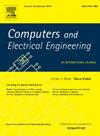An improved hybrid model for wind power forecasting through fusion of deep learning and adaptive online learning
IF 4
3区 计算机科学
Q1 COMPUTER SCIENCE, HARDWARE & ARCHITECTURE
引用次数: 0
Abstract
Accurate and effective wind power forecasting is crucial for wind power dispatch and wind energy development. However, existing methods often lack adaptive updating capabilities and struggle to handle real-time changing data. This paper proposes a new hybrid wind power forecasting model that integrates the Maximal Information Coefficient (MIC), Density-Based Spatial Clustering of Applications with Noise (DBSCAN), an improved Harris Hawks Optimization (IHHO) algorithm, and an Adaptive Deep Learning model with Online Learning and Forgetting mechanisms (ADL-OLF). First, MIC is used to reconstruct input features, enhancing their correlation with the target variable, and DBSCAN is employed to handle outliers in the dataset. The ADL-OLF model enables continuous updating with new data through online learning and forgetting mechanisms. Its deep learning component consists of Bidirectional Long Short-Term Memory (BiLSTM) networks and self-attention mechanisms, which improve the prediction accuracy for sequential data. Finally, IHHO optimizes the parameters of the ADL-OLF model, achieving strong predictive performance and adaptability to real-time changing data. Experimental simulations based on actual wind power data over four seasons from a U.S. wind farm show that the proposed model achieves a coefficient of determination exceeding 0.99. Compared with 12 benchmark models (taking IHHO-ADL-OLF as an example), the Root Mean Square Error (RMSE) is reduced by more than 20%. These results indicate that the model significantly improves the accuracy and robustness of wind power forecasting, providing valuable references for the development and optimization of wind power systems.
通过融合深度学习和自适应在线学习改进风能预测混合模型
准确有效的风电预测对风电调度和风能开发至关重要。然而,现有方法往往缺乏自适应更新能力,难以处理实时变化的数据。本文提出了一种新的混合风电预测模型,该模型集成了最大信息系数(MIC)、基于密度的有噪声应用空间聚类(DBSCAN)、改进的哈里斯鹰优化(IHHO)算法以及具有在线学习和遗忘机制的自适应深度学习模型(ADL-OLF)。首先,使用 MIC 重构输入特征,增强其与目标变量的相关性,并使用 DBSCAN 处理数据集中的异常值。通过在线学习和遗忘机制,ADL-OLF 模型可以根据新数据不断更新。其深度学习组件由双向长短期记忆(BiLSTM)网络和自我注意机制组成,可提高连续数据的预测准确性。最后,IHHO 优化了 ADL-OLF 模型的参数,实现了强大的预测性能和对实时变化数据的适应性。基于美国风电场四季实际风力发电数据的实验模拟表明,所提出的模型的决定系数超过了 0.99。与 12 个基准模型(以 IHHO-ADL-OLF 为例)相比,均方根误差(RMSE)降低了 20% 以上。这些结果表明,该模型显著提高了风电预测的准确性和鲁棒性,为风电系统的开发和优化提供了有价值的参考。
本文章由计算机程序翻译,如有差异,请以英文原文为准。
求助全文
约1分钟内获得全文
求助全文
来源期刊

Computers & Electrical Engineering
工程技术-工程:电子与电气
CiteScore
9.20
自引率
7.00%
发文量
661
审稿时长
47 days
期刊介绍:
The impact of computers has nowhere been more revolutionary than in electrical engineering. The design, analysis, and operation of electrical and electronic systems are now dominated by computers, a transformation that has been motivated by the natural ease of interface between computers and electrical systems, and the promise of spectacular improvements in speed and efficiency.
Published since 1973, Computers & Electrical Engineering provides rapid publication of topical research into the integration of computer technology and computational techniques with electrical and electronic systems. The journal publishes papers featuring novel implementations of computers and computational techniques in areas like signal and image processing, high-performance computing, parallel processing, and communications. Special attention will be paid to papers describing innovative architectures, algorithms, and software tools.
 求助内容:
求助内容: 应助结果提醒方式:
应助结果提醒方式:


